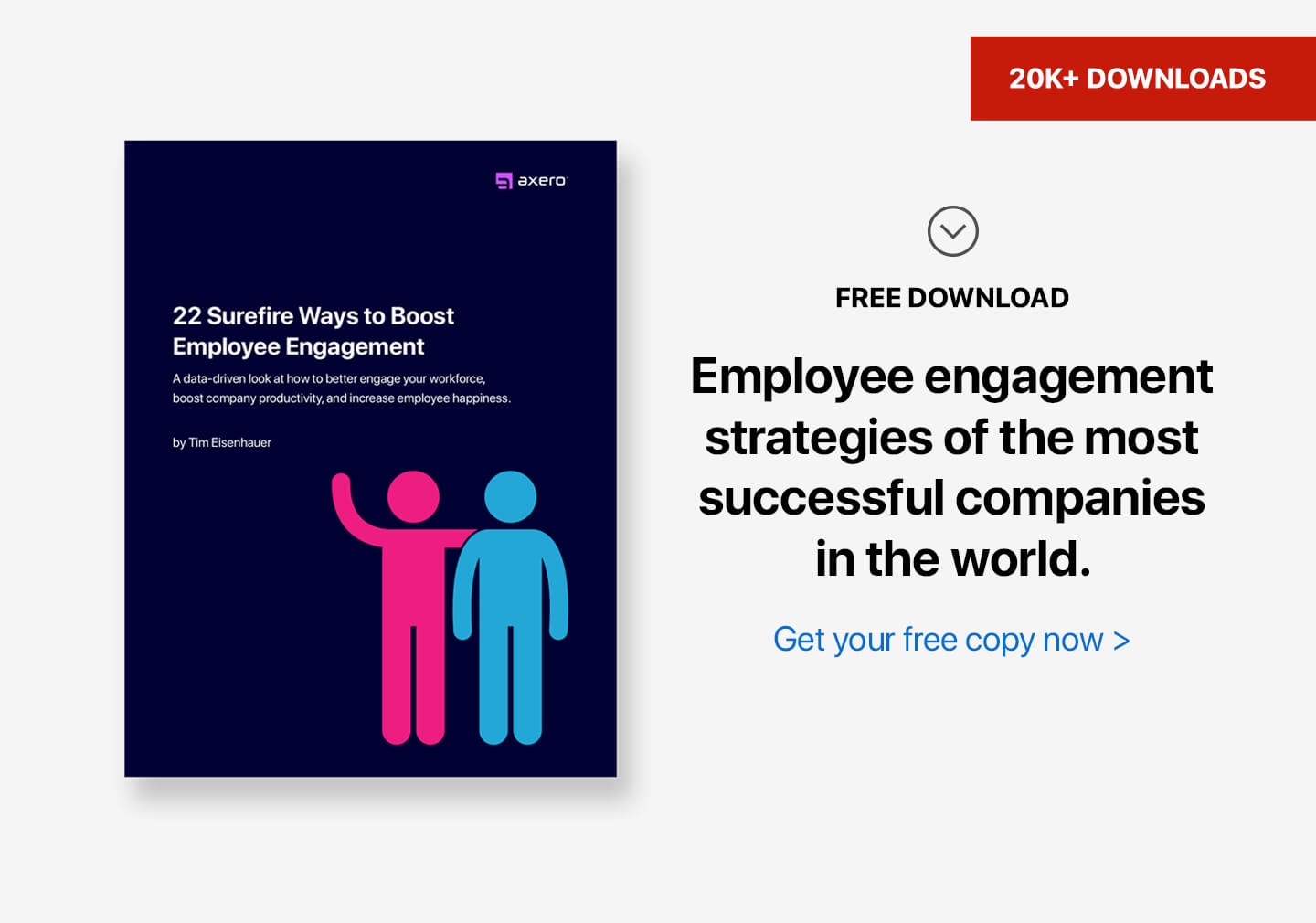Gallup, TinyPulse, Officevibe, CultureIQ, Culture Amp, and hundreds of other HR experts have a magic bullet for your employee engagement problem. It’s called an employee engagement survey. According to CultureIQ, 55 percent of employers who “actively manage company culture and drive employee engagement” do so by drafting employee engagement surveys.
Hmmm…
I’m a big fan of giving employees a voice. But for a survey to drive engagement two things need to happen:
1. It must provide accurate data, and
2. It must point to a solution
Does your survey do that?
In recent years we’ve fallen in love with the idea of treating employees like customers. Hence the proliferation of employee surveys. But we’re yet to learn what consumer marketing has discovered through agonizing trial and error: surveys and focus groups are often misleading.
Because buyers are liars.
Here’s what one real estate agent said on Quora:
“Buyers will tell you they only want a house that has 4 bedrooms, only to buy a house with another agent that showed them a house with 3 bedrooms they liked.”
If people don’t know what kind of house they want, can they predict what would get them to work harder and enjoy their work more?
Don’t bet on it.
Social psychologist David Dunning has conducted several studies of self-awareness. His experiments show that we are as good at predicting our own behavior as we are at guessing the behavior of perfect strangers. In other words, we don’t have a clue.
In one experiment, Dunning asked participants how likely they were to buy a daffodil to benefit the American Cancer Society. A full 83 percent said they would. When the fundraiser came, only 43 percent made a pledge. The researchers also learned that people’s predictions about themselves had no effect on their subsequent behavior. In fact, when given just five pieces of information about a total stranger, the participants guessed his or her behavior with the same degree of accuracy as their own. 1
So, maybe asking your buyers or your employees hypothetical questions is not a good idea—but what about their actual experience? Can they accurately describe something that took place in the recent past?
It turns out that it’s not so easy for us to recall past events exactly as they happened. The multiple shortcuts our brains take when processing and storing information are responsible for this phenomenon. One common error is to let newer memories color the earlier ones. Another is to exaggerate the negative and take the positive for granted. As a result, a small problem at the end of the evaluation period could wipe out the good feelings that came before it, while the reverse is not as likely.
Suppose you ask your team: “In the last year, have you had opportunities to learn and grow?” The timing of the survey could easily skew the response. For example, during a busy stretch at work, employees might feel like they’ve had their noses to the grindstone the entire year and have missed out on learning new skills, even though it’s not true.
This may not sound like a huge problem. After all, people’s perceptions are their reality. The survey doesn’t need to describe the past or predict the future accurately. Its job is to capture employee sentiment at the present moment.
But does it do that?
Culture Amp’s Jennifer Cullen argues that ingrained biases not only distort our memories, they also make us hide our feelings. In her article “Where Employee Surveys on Burnout and Engagement Go Wrong” (Harvard Business Review, December 14, 2017), she warns against two likely scenarios.
1. Social desirability bias
The biggest difference between your customers and your employees is that your customers are not out to impress you, but your employees are. Even if there’s no direct pressure from management to inflate the numbers—and that’s a big if—employees are likely to put that pressure on themselves:
“When employees are asked to complete surveys, their responses can be shaped by social desirability bias—the impulse to present themselves in a positive light so their bosses will think well of them. The survey becomes an exercise in “impression management” rather than a tool for change, because respondents don’t want to suggest that they personally have a problem or can’t handle their work. Even when workplace surveys are administered by third parties, as they often are, studies have found that anonymity does not completely erase the social desirability response bias. That’s in part because people don’t want to think of themselves in a negative light.” 2
2. Acquiescence bias
This unconscious habit has us choose “I agree” as a default response whenever we’re not sure or not happy with our options.
Consider a question like “Does your company’s mission make you feel your job is important?” A typical corporate employee doesn’t give a lot of thought to the company mission. Your people may not know what it is, or they may have no feelings about it. In theory, they should choose “No” in both those cases. In practice, however, many will say “yes” and mask the problem with fake agreement.
So, where does this leave you and me?
Some employee advocates denounce employee engagement surveys altogether. They want you to track tangible outcomes, like turnover, productivity, and quality. They also think management should talk to employees face-to-face, not hide behind surveys.
Others—our friends in the survey business among them—want you to spend a lot of time and money crafting your questions. They believe the right question can unearth the missing link between you and your people. If you’re in this camp, business psychologist Palmer Morrel-Samuels has more advice for you. Here are a few takeaways from his article, “Getting the Truth into Workplace Surveys.” 3
“Ask questions about observable behavior rather than thoughts or motives”
If you want your survey to pinpoint a problem and help you find a solution, you must substitute fact for opinion whenever possible. For example, instead of asking employees whether management “understands the business and the marketplace,” Morrel-Samuels suggests asking if a leader “resolves complaints from customers quickly and thoroughly.”
As we’ve seen earlier, even the revised question invites all sorts of biases and assumptions. Nevertheless, he argues, it will give you a better starting point:
“Although the change did not completely remove the subjectivity of the evaluation—raters and leaders might disagree about what constitutes quick and thorough resolution—at least responses could be tied to discrete events and behaviors that could be tabulated, analyzed, and discussed.”
He goes as far as to recommend that you “include some items that can be independently verified” to validate survey data. Without this step, he says, there’s no guarantee that “the survey actually measured what it was designed to measure.” For example, if you ask employees whether a manager “establishes loyal and enduring relationships,” be sure to check the responses against retention data. Another trick is to ask employees to rate the profitability of their units and compare the responses with actual profits.
“Measure only behaviors that have a recognized link to your company’s performance”
Now that everyone is trying to measure engagement, this old-fashioned rule could serve as a sanity check. Yes, engagement affects performance, but you can’t do much about either as long as these terms remain loosely defined.
Morrel-Samuels recommends starting with an aspect of performance the company wishes to improve. Once the client selects a specific problem, he checks published research for contributing factors and builds the survey around a likely solution.
A case in point is International Truck and Engine Corporation. Before drafting an employee survey for this company, he interviewed management about their top concerns. Everyone agreed that the rate of defects was too high. The research suggested that poor communication could be at fault, as did some of the executives he interviewed. Next, the team designed the survey to test this hypothesis:
“As a result, we included a number of questions about communication in the survey. One question asked respondents to indicate how often ‘In our department, we receive all the information we need to get our jobs done.’ The results confirmed that poor communication was indeed associated with the defect rate. The company then implemented a pilot program at one of its larger manufacturing facilities to improve communication within and between departments. Following this intervention, communication scores at the pilot site rose 9.5% while defects fell 19%.”
On the opposite end of the spectrum are business leaders who like surveys, but don’t hang their hopes on asking the right questions. To them, the best measure of engagement is participation. It’s not about a positive vs. negative response. It’s whether employees respond at all.
Meet Dean Carter, formerly of Sears, now of Patagonia. At Sears Holdings, Carter held the unusual title of Chief HR Officer. He eliminated Sears’ annual performance review ratings in favor of a social tool that lets employees gather feedback from anyone in the company, not just their bosses. In 2013 the Global HR Summit selected Carter for its Top 10 Breakaway HR Leaders. His most recent accomplishment is an employee feedback platform he pioneered at Sears and Kmart stores:
“Each day, when they punched out at the end of their shifts, workers were asked, ‘How’s your mood? All they had to do was tap an emoji — happy face, mad, blah, neutral, or whichever reflected their state of mind at that moment. If a store showed a significant drop in employees picking an emoji, regardless of which one, we found that store had a big attrition problem 30 to 60 days later. It was remarkably accurate.” 4
The same pattern held coast to coast for hourly and salaried employees alike. Carter used the system to spot changes in the participation of each individual employee.
“If someone has been weighing in often, or regularly, and then suddenly stops, that’s when you might have a problem. At Sears, when we first started gathering feedback, I had one valuable member of my own staff, right down the hall, who suddenly got very quiet. When I met with her to learn more, it turned out she was job hunting — but we managed to keep her.”
Notice that Carter’s approach is not “measuring performance” or “measuring engagement.” He doesn’t seem fixated on a number. Rather, he uses various feedback tools to make new—or re-establish lost—connections among employees. He is reported to liken a company to a “giant rubber life raft”:
“Anytime you poke a hole in the raft, the whole raft goes down—not just their side of the boat. What you should be doing every single day is looking for ways to help the team patch their holes and make sure the raft is full. Take care of the situation, and do what you need to do.” 5
The raft analogy must have clinched Carter’s move to Patagonia. It works for me too. Patching holes in relationships and practices that make up your company is the only thing that will make a difference for your business. Surveys are not magic bullets. They are only useful as part of a larger effort to bring clarity and unity into the workplace. So, here’s a simple test: if a survey confuses and alienates your people, get rid of it. If it helps them understand and connect with each other, keep it alive and act on it.
—-
If you like surveys, you might like my book, because it has a few you wouldn’t want to miss.
—-
[2] https://hbr.org/2017/12/where-employee-surveys-on-burnout-and-engagement-go-wrong
[3] (Harvard Business Review, February 2002). https://hbr.org/2002/02/getting-the-truth-into-workplace-surveys
[4] Anne Fisher “How Patagonia Keeps Employee Turnover ‘Freakishly Low,” Fortune, June 9, 2016) http://fortune.com/2016/06/09/patagonia-employee-turnover/
[5] http://www.forefrontmag.com/2015/03/for-the-good-of-the-hr-tribe/












 info@axerosolutions.com
info@axerosolutions.com 1-855-AXERO-55
1-855-AXERO-55


